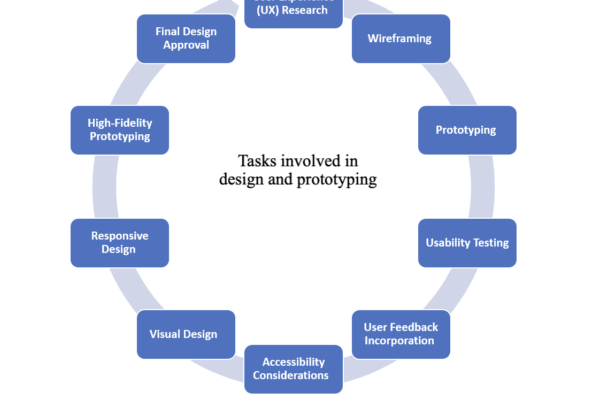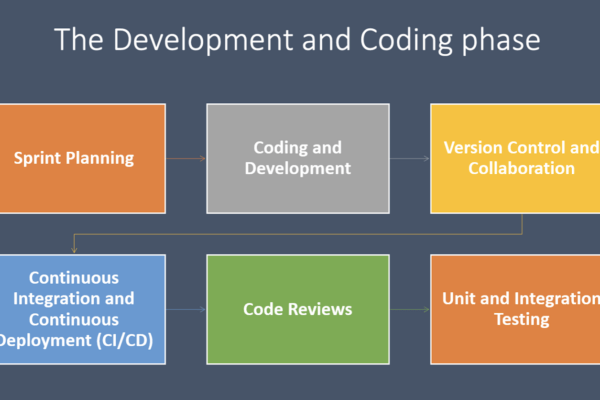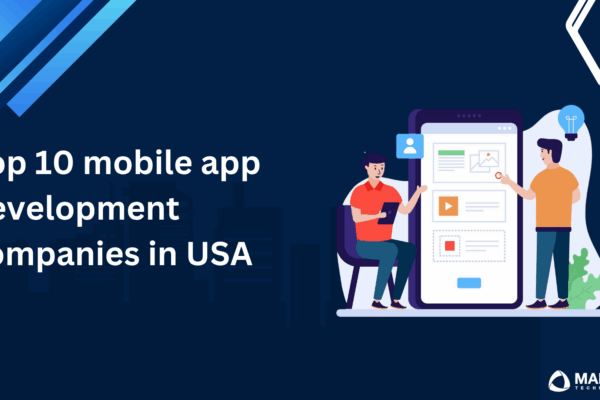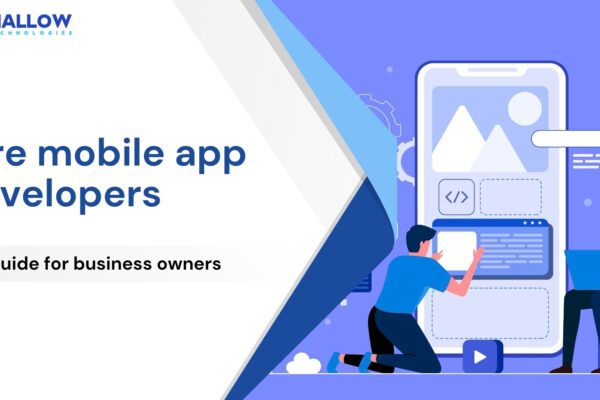Have you recently explored information about Mallow? Have you initiated a conversation with our expert by completing the form? We understand that reaching this stage of the shortlisting process may have involved overcoming challenges. However, your questions and uncertainties may not end here. We are dedicated to providing comprehensive assistance as you consider collaborating with us. Through this article, we aim to offer insight into what to expect during your engagement with Mallow for Python application development.
At Mallow, being a dedicated Python development company, we understand that successful collaboration hinges on transparency and communication. We prioritize empowering our clients to make informed, unbiased decisions, which is why they continually return to us for our services.
Upon perusing this article, you’ll gain a thorough understanding of engaging in a Python project enriched with Mallow’s distinctive expertise. Through our client-focused methodology, we’ve crafted a detailed roadmap, guiding you seamlessly through every phase of Python application development and affording you direct insight into our structured process.
How is the setup phase typically initiated?
From the initial inception during the discovery call to the commencement of project execution, every stage holds significance. Below are the steps encompassed in the initial phase of project setup.
- The discovery call (Duration – within a day)
The journey into Python application development with Mallow begins with a crucial discovery call, marking the foundation of the project. In this phase, our team will interact with you to comprehend your vision, goals, and expectations. This collaborative discussion helps align the development approach with your aspirations, ensuring a thorough understanding of the project’s scope, objectives, and hurdles. By the conclusion of the discovery call, we will establish a shared perspective, paving the way for a collaborative and well-informed development expedition.
Your journey with Mallow begins with a crucial discovery call, laying the groundwork for the project. In this interactive phase, our team collaborates with you to understand your vision, goals, and expectations. Following structured discovery frameworks, like those recommended by the Interaction Design Foundation, ensures that user needs are aligned with technical feasibility and business value. By the conclusion of the discovery call, we aim to establish a shared perspective, preparing for a collaborative and well-informed development process.
- Defining your application development team (duration 1-2 days)
The composition and scale of your Python application development team are intricately tied to the particular services you plan to utilize with Mallow. The nature of your project, whether it entails crafting a polished mobile app, a resilient web platform, or a sophisticated enterprise solution, will shape the expertise and skill sets needed.
The team size may vary from a small, agile group for smaller projects to a diverse ensemble for larger endeavors in Python application development. This encompasses services such as design, development, quality assurance, and project management, which will dictate the roles and expertise within the team. Aligning the scope of your Python project with the suitable team configuration is vital to guaranteeing a smooth and prosperous collaboration with Mallow.
For instance, let’s examine a Python application comprising approximately 8-10 modules, with each module containing 7 to 8 features. Additionally, the application requires several third-party integrations, managing substantial data, and catering to multiple users. It is imperative to recruit an appropriate number of team members from various services to effectively handle the features delivered within the specified timeline.
The table below will give you an overview of some possible roles you could consider hiring.
| Roles | Responsibilities |
| Project Manager | Responsible for defining project goals. Ensures alignment with business objectives throughout the development process |
| Business Analyst | Works closely with stakeholders to gather requirements. Analyses business requirements.Translates them into functional specifications for the development team |
| Technical Manager | Ensures the successful delivery of the application. Build platform strategies to achieve customer business goals. Identify business risks and technical solutions to mitigate them. Collaborate with the team members on technical and customer service challenges. Evaluate existing client data/architectural models and perform/drive in-depth analysis of systems, data flows processes, and architectural setup. |
| Designer | Analyses the customer needs and implements the same in prototypingIdeation of designs. Execution of proper theme and colourations as per the expectations. Works on implementing user interface. Ensures the way of presentation is compatible enough. |
| Back-end developer(s) | Develops the server-side components. Handles data management.Implements business logic. Integrates various systems to ensure the application’s functionality and performance. |
| Front-end developer(s) | Implements the user interface and interactive components of the application using web technologies such as HTML, CSS, and JavaScript, React and Angular. Ensures an engaging and user-friendly experience. |
| DevOps | Coordinates with project managers for architecture planning. Create scripts to automate deployments.Setting up CI/CD Deploys updates. Adheres to proper security measures in the production workloads. Analyses the root cause for hosting-related errors in production. Does risk analysis of the application. Audits the project architecture and suggests the best practices. Monitors the health of the application. Implements procedures to tackle system troubleshooting and maintenance. Ensures the application meets the current industry standards. |
| Quality Analyst | Ensures the quality of the software delivered. Develops and executes plans for testingImplements and monitors test scripts and monitors reliability and performance. Monitors and recommends preventive measures. Suggests corrective actions. Investigates customer complaints and product issues. Drafts quality assurance policy and procedures. |
| Team Lead | Mentor and lead development teams in the implementation of solutions. Technically manages the team, audits the code, and assures product quality. Define the solution roadmap, as well as the requirements and use cases that will be used to drive implementation plans and estimates. |
It’s important to note that the roles mentioned above depict potential contributors within a Python application development team. However, the ideal blend of services and team members should be customized to precisely match the specific requirements of your project.
- Signing contracts (Duration – 1 day)
Contracts serve as the legal basis of a collaborative partnership. Lasting a day, this phase entails formalizing the agreement between you and the Mallow team. The contract delineates deliverables, timelines, terms of engagement (including pricing details, team size, services chosen, and the notice period), as well as confidentiality agreements. This crucial step guarantees clarity and transparency, setting up a framework for mutual comprehension and accountability in the Python project.
- Determining the optimal project management model for your application (duration: 1 day)
After solidifying the requirements, Mallow dedicates a day to defining the project management model for Python applications. This stage sets the roadmap for project execution, including timelines, milestones, communication protocols, and workflow strategies. Through crafting a sturdy project management model, we ensure smooth coordination, transparent reporting, and effective resource allocation throughout the development cycle.
Selecting the suitable project management model for your Python application is highly significant and requires thorough deliberation. Explore this article on choosing the appropriate project management model to effectively navigate the process of selecting the right approach for managing your project.
- Initiating your project (duration: 1 to 2 days)
The inception of a project is an exhilarating phase, particularly when everyone has contributed their input and ideas to ensure a collaborative and well-informed kickoff. Over 1 to 2 days, the development team initiates the realization of the project plan. This involves setting up development environments, establishing communication channels, and aligning resources. With a shared vision, comprehensive requirements, and a cohesive team in place, the project transitions into its active execution phase, marking the beginning of transforming ideas into reality. Setting up version control and development environments at this stage is aligned with industry best practices outlined by GitLab’s DevOps lifecycle documentation.
The table below provides insight into the nature of tasks during this phase when planning to develop either a new Python application or enhance an existing one.
| Tasks | If you are planning for a new application | If you own an existing application |
| Set up development environments | Configure development tools and frameworks for building the application. Prepare version control systems and establish coding standards. | Assess the existing development environment. Update and align tools, frameworks, and coding standards as necessary. |
| Establishing communication channels | Set up collaborative platforms and communication tools for the team. Define communication protocols and establish regular meetings. | Review and enhance communication channels. Ensure ongoing collaboration with developers, designers, and stakeholders. |
| Aligning resources | Assign roles and responsibilities within the development team. Ensure a mix of developers, designers, QA specialists, and a project manager. | Reassess team roles and responsibilities. Allocate resources based on new tasks, updates, and any changes to the development team structure. |
| Verifying shared vision | Confirm that the entire team understands the project’s objectives and goals. Address any questions or concerns regarding the project. | Revisit the initial vision of the application. Align the vision with any shifts in business goals, user needs, or industry trends. |
| Adapting comprehensive requirements | Ensure the team has a clear understanding of the application’s functionalities. Refine user stories, features, and technical specifications. | Review and refine existing application features. Consider enhancements, bug fixes, and updates based on user feedback and evolving business needs. |
| Transitioning to the active execution phase | Initiate coding, designing, and testing processes as per the project plan. Develop the first iteration or Minimum Viable Product (MVP) for testing. | Seamlessly integrate new tasks into the ongoing development workflow. Prioritise updates, bug fixes, and feature enhancements based on business priorities. |
How does the cycle of application development appear?
As a top-tier custom software development firm, Mallow adheres to a carefully constructed application development cycle tailored to produce resilient, inventive, and user-focused software solutions. This holistic strategy steers the path from ideation to deployment, comprising a sequence of interlinked phases that harness advanced technologies, streamlined methodologies, and collaborative proficiency.
- Finalising the application requirement
In this stage, the Mallow team will examine your requirements. This thorough assessment delves deeply into the intricacies of the project, covering its functional, technical, and design elements.
Your active involvement is vital during the requirement finalization process. This entails extensive discussions to confirm details and ensure no aspect is overlooked, aligning the application precisely with your requirements. The result is a comprehensive project brief detailing the blueprint, functionalities, user experiences, and technical specifications. This phase fosters a profound understanding of your needs and establishes the foundation for informed decision-making.
This phase includes tasks such as:
✅ Understanding your business goals
✅ Defining, prioritising and documenting the requirements of the scope
✅ Validating requirements received
✅ Prototyping or mockups
✅ Legal and compliance
✅ Data Management, performance and scalability
✅ Security and privacy
✅ Localisation and internationalisation
✅ Review and approval
✅ Documentation repository
Please note that the typical timeframe for requirement analysis varies from a few days to several weeks based on the specifics of the project. The exact duration depends on the unique nature of each project undertaken by the Mallow development team.
- Planning and Strategy
Once requirements are set, the planning and strategy phase begins. We formulate the project plan detailing timelines, milestones, resource allocation to specific tasks, and risk management strategies. This plan acts as a guide, steering the development process and ensuring effective execution. The team establishes communication protocols, configures project management tools, and clarifies roles and responsibilities, creating a collaborative environment that facilitates seamless progress.
| Key components of the during this stage | |
| Aspect | Description |
| Timeline | Establish a project timeline with key milestones and deadlines |
| Resource Allocation | Allocate roles, responsibilities, and needed skill sets |
| Task Breakdown | Divide the project into smaller tasks and subtasks |
| Risk Assessment | Identify potential risks and plan for mitigation |
| Communication Plan | Define communication channels and reporting structures |
- Designing
During the design and prototyping phase, our designers develop interactive prototypes to provide a tangible representation of the application’s user interface and experience. This prototyping stage enables clients and stakeholders to visualize the software’s functionality and flow, facilitating informed feedback and design enhancements. By incorporating user-centric design principles, Mallow ensures that the application meets and surpasses user expectations.

- Development and coding
Equipped with the blueprint, the development and coding phase takes center stage. Mallow’s skilled developers translate ideas into code and construct both the backend and frontend components of the application. Following industry best practices and harnessing the latest technologies, the team constructs a sturdy and scalable foundation that serves as the heart of the software solution.

How does the development and coding phase at Mallow unfold in Python projects?
- Sprint planning
Prior to each sprint, Mallow’s development team engages in sprint planning sessions. They break down the project into user stories or tasks, estimate the required effort, and prioritize them based on business value and complexity.
- Coding and development
Mallow’s proficient developers initiate coding based on the outlined requirements and user stories within the sprint. They meticulously craft comprehensive unit test cases to ensure the robustness and functionality of the Python codebase.
- Version control and collaboration
Mallow utilizes version control systems like Git to manage the Python codebase. This fosters seamless collaboration among developers, facilitates code reviews, and maintains a history of changes made to the codebase.
- Continuous integration and continuous deployment (CI/CD)
Mallow emphasizes CI/CD practices to automate the testing, building, and deployment of the Python application. Automated tests are regularly executed to ensure that new code changes do not disrupt the existing application flow. The benefits of CI/CD in accelerating feedback loops and improving software stability are well documented by Google’s DORA team.
- Code reviews
Code reviews play a crucial role in Mallow’s development process. Developers meticulously review each other’s Python code to identify bugs, ensure compliance with coding standards, optimize the code, and share knowledge. This peer review practice promotes code quality and knowledge dissemination.
- Unit and Integration Testing
Mallow’s development team crafts unit tests to validate the functionality of individual Python components and integration tests to assess interactions between different modules. These tests aid in detecting bugs early in the Python development lifecycle.
- Quality Assurance
Mallow’s dedication to quality extends to the meticulous Quality Assurance and Testing phase in Python projects. The application undergoes rigorous testing to pinpoint and address any potential bugs, glitches, or performance concerns. Mallow’s QA specialists conduct a variety of tests, including functional, performance, security, and usability testing, ensuring that the application not only functions flawlessly but also delivers a seamless and secure user experience.
To provide an overview, this phase encompasses tasks such as:
- Thorough functional testing to verify each feature’s intended behavior.
- Regression testing to confirm that new code changes do not affect existing functionalities.
- Performance testing to evaluate application responsiveness, scalability, and stability.
- Security testing to identify vulnerabilities, breaches, and data leaks.
- Usability testing to assess user-friendliness and ease of navigation.
- Compatibility testing across various devices, browsers, and operating systems.
- Integration testing to validate smooth interaction between application components.
- Development of comprehensive test plans and detailed test cases.
- Execution of test cases to detect and document issues.
- Reporting, tracking, and resolution of bugs.
- Collaboration with developers for issue clarification and resolution.
- User Acceptance Testing (UAT) involving clients.
- Documentation of testing processes, results, and identified issues.
- Validation of fixes and improvements following issue resolution.
- Ensuring compliance with industry standards and best practices.
- Deployment and Launch
As the development journey approaches its conclusion, Mallow shifts its focus to the deployment and launch phases in Python projects. The application undergoes careful deployment on the selected platform, whether it’s a website, mobile app store, or another distribution channel. Mallow’s team ensures a seamless transition from development to live, meticulously verifying that the software functions as intended in the real-world environment.
To provide an overview of the process, here are some steps involved during the deployment and launch of your Python application.
- Infrastructure setup
Mallow’s DevOps team orchestrates the configuration of the live environment, encompassing servers, databases, and essential services. They guarantee that the infrastructure is tailored for optimal performance, security, and scalability. Team Mallow establishes and refines the CI/CD pipeline utilizing tools such as Jenkins, GitLab CI/CD, or similar options. This pipeline automates the procedure of building, testing, and deploying code alterations, ensuring a uniform and dependable deployment workflow.
- Staging environment deployment
Mallow deploys the application to a staging environment that closely mirrors the production environment. This allows for thorough testing and validation of the application in a controlled setting.
- User Acceptance Testing (UAT)
Mallow involves clients and stakeholders in the UAT process. They test the application in the staging environment to validate that it meets their requirements and expectations before deployment to the live environment. Mallow’s security experts perform a final security audit, ensuring that all vulnerabilities are addressed and the application is fortified against potential threats.
- Data migration and configuration management
If applicable, Mallow ensures a seamless data migration from the development or previous version of the application to the new production environment. We ensure that configurations, settings, and environment variables are correctly set up for the production environment, maintaining consistency and stability.
- Load balancing and scalability setup
Mallow configures load balancing and scaling mechanisms to distribute traffic and ensure the application can handle varying workloads without downtime.
- Backup and recovery plans
Mallow establishes backup and recovery strategies to safeguard against data loss or unexpected issues. This ensures the Python application’s availability and data integrity. We also set up monitoring tools to track application performance, server health, and other critical metrics. Automated alerts are configured to address any issues that arise promptly.
- Final user acceptance testing
Before the actual launch, we conduct a final round of UAT in the production environment to ensure everything is functioning as expected. The QA team performs a final check to validate that all issues identified during testing have been resolved and the Python application is ready for launch.
- Deployment to production
Upon completion of all testing and validation processes, the application is deployed to the live production environment. This step involves making the Python application accessible to users through app stores, websites, or other distribution channels. Effective deployment and handover procedures are considered essential elements of mature DevOps processes, as noted by IBM’s guide to Continuous Delivery.
- Post-launch monitoring and support setup
Mallow establishes post-launch monitoring and support mechanisms to promptly address any issues that may arise after the application is live. This includes monitoring user feedback, performance metrics, system health, and other relevant factors.
- Post-launch monitoring and support
Mallow’s dedication to client success continues beyond deployment. The Post-launch Monitoring and Support stage involves ongoing monitoring of the application’s performance, collection of user feedback, and resolution of any post-launch issues. Mallow’s team remains committed to providing continuous support, updates, and enhancements to ensure the Python application’s long-term success and relevance.
How do companies offering application development services establish the fees they charge?
At this point, you should have a clear understanding of the collaborative experience when working on a Python project with Mallow. You’ve gained insights into how our structured process can be tailored to meet your expectations.
Following this, your next step involves evaluating the costs associated with development companies, taking into account factors such as quality, time, and budget. For further insights, explore this article on how application development companies determine their charges. Understanding the components influencing the final cost can assist you, as a business owner, in assessing the proposed costs from your development team.
If you already own a Python application but require assistance with maintenance or other support-related tasks, our team of experts can provide assistance in that regard as well. For more information on post-launch monitoring and support-related inquiries, please feel free to reach out to our team.
Still, wondering where you need to start taking your next move? Please feel free to get in touch with our team.
Your queries, our answers
Mallow specializes in a wide range of Python projects, including web development, data analytics, automation, and custom software solutions. We cater to businesses of all sizes, ensuring each solution is tailored to specific business needs.
Reach out to our experts today to explore how we can drive your success with a solution crafted specifically for you.
Mallow has a team of experienced Python developers who have successfully delivered projects across various industries. Our expertise spans from developing simple automation scripts to complex enterprise applications.
Mallow follows industry best practices to ensure the security of Python applications. This includes implementing secure coding standards, regular security audits, and using encryption and authentication measures to protect your data and application from vulnerabilities.
Mallow serves a variety of industries, including healthcare, finance, e-commerce, and education. Our Python solutions are tailored to meet the specific needs and challenges of different industries.
The cost of Python development with Mallow depends on the project’s complexity, scope, and requirements. We offer transparent pricing and work with you to create a solution that fits your budget while delivering high-quality results.
To know in detail about the cost factors, have a look at Hire Python developer: Cost factors and considerations
Mallow understands that business needs can evolve. We offer flexible post-launch support and maintenance services, allowing you to make updates, add new features, or modify your Python project as your requirements change.
Yes, Mallow can assist with migrating your existing project from another programming language to Python. We carefully plan and execute the migration process to ensure a seamless transition with minimal disruption to your operations.
Mallow offers a range of Python development services, including custom web development, API development, automation scripts, data analysis, and more. We provide end-to-end support, from consulting and development to deployment and maintenance.
Python is a versatile and highly readable programming language. It's ideal for rapid development, scalability, and has a vast ecosystem of libraries and frameworks, making it suitable for various applications, including web development, automation, and data analysis.
Starting a Python development project with Mallow is straightforward. You can contact us via our website, email, or phone to set up an initial consultation. We’ll discuss your project’s requirements, goals, and timeline, then provide you with a tailored proposal to kick off your project.
Check out our article on what it looks like to work with a Python development company like Mallow.
Quality is a top priority at Mallow. We implement best practices in coding, conduct rigorous testing, and perform code reviews to ensure that every Python project meets high standards of performance and reliability.
The timeline for a Python project depends on its complexity and scope. Mallow works closely with clients to define clear timelines and deliver the project on schedule while maintaining the highest quality standards.
Mallow provides ongoing support for updates and feature enhancements. Whether you need to add new functionality, optimize performance, or update your application, our team ensures your Python project continues to meet your evolving business needs.
Connect with our experts today to explore how we can elevate your project further.
Mallow believes in close collaboration with our clients. You’ll be involved throughout the development process, from initial planning to deployment. Regular updates and feedback sessions ensure that the project aligns with your goals.
Yes, Mallow has extensive experience in integrating Python applications with various technologies, including databases, APIs, third-party services, and other programming languages. We ensure seamless integration to provide a cohesive solution for your business.
Mallow designs Python applications with scalability in mind. We use best practices in software architecture to ensure that your application can grow and handle increased traffic or data without compromising performance.
Author
Jagajeevan
Jagan is a successful project manager with over 8 years of experience at Mallow Technologies. With his strong leadership skills and meticulous approach to project management, Jagan has consistently delivered successful outcomes for a diverse range of client engagements. Throughout his career, Jagan has been responsible for overseeing complex projects from inception to completion. His excellent communication skills and collaborative approach enable him to understand client requirements, effectively communicate project progress, and address any concerns that may arise. Outside of his work, Jagan is an avid reader and finds solace in the world of books during his free time. He believes in continuous learning and stays updated with industry trends, management methodologies, and leadership practices through his reading habits.



